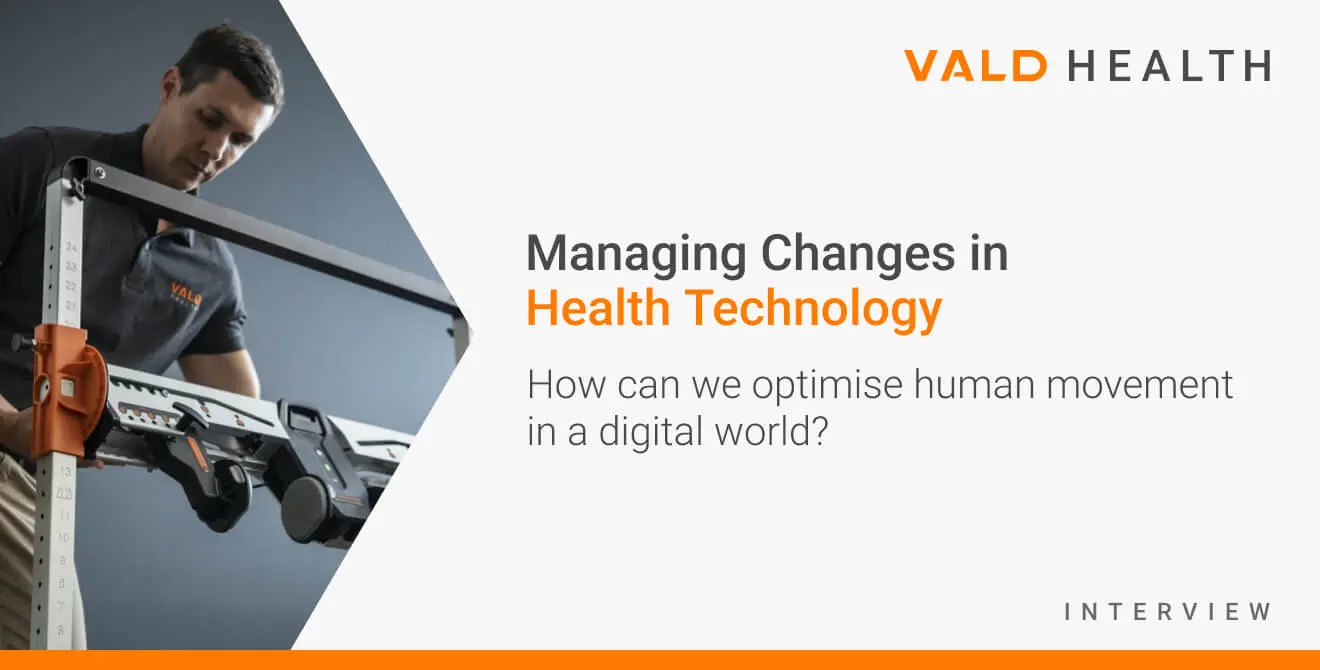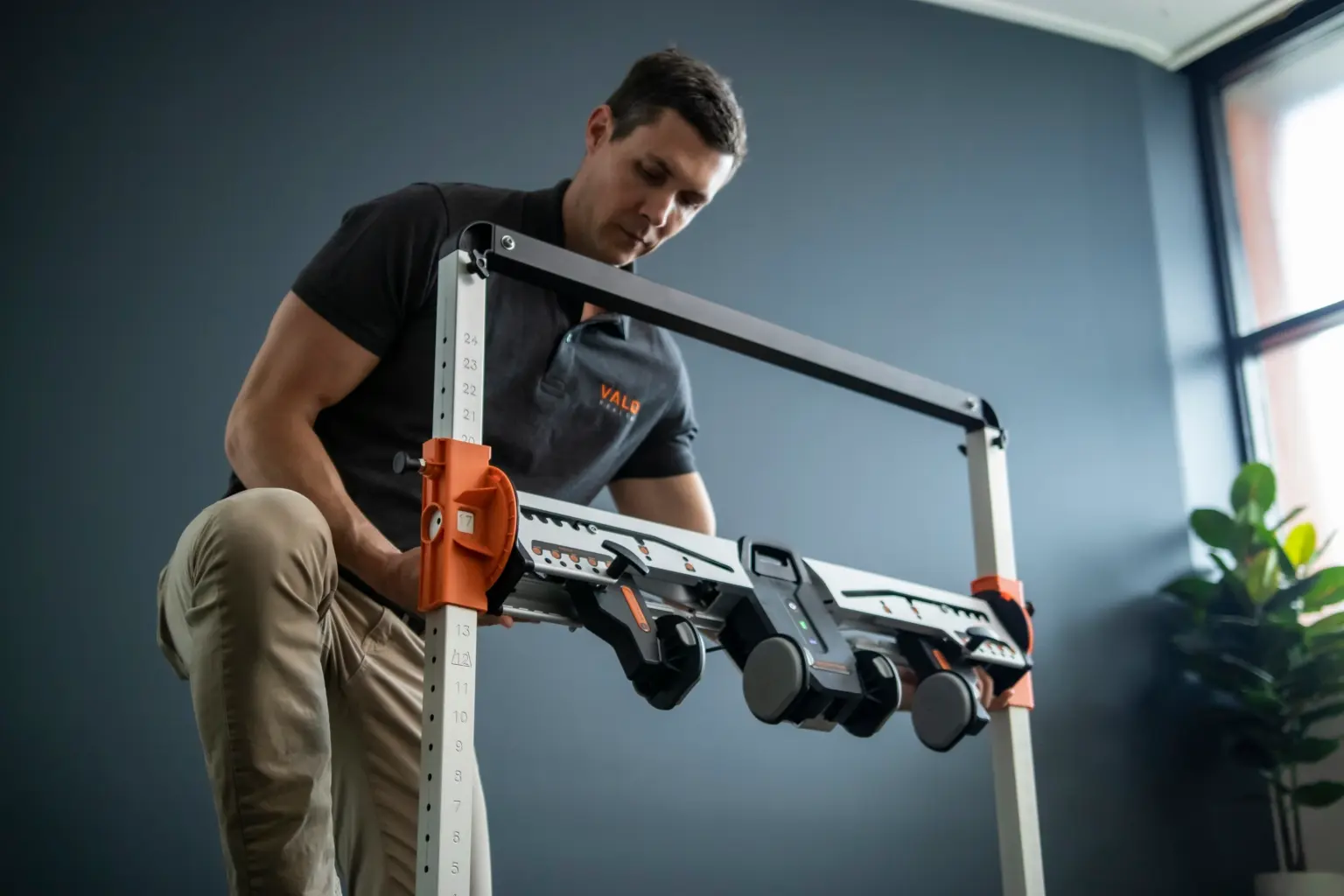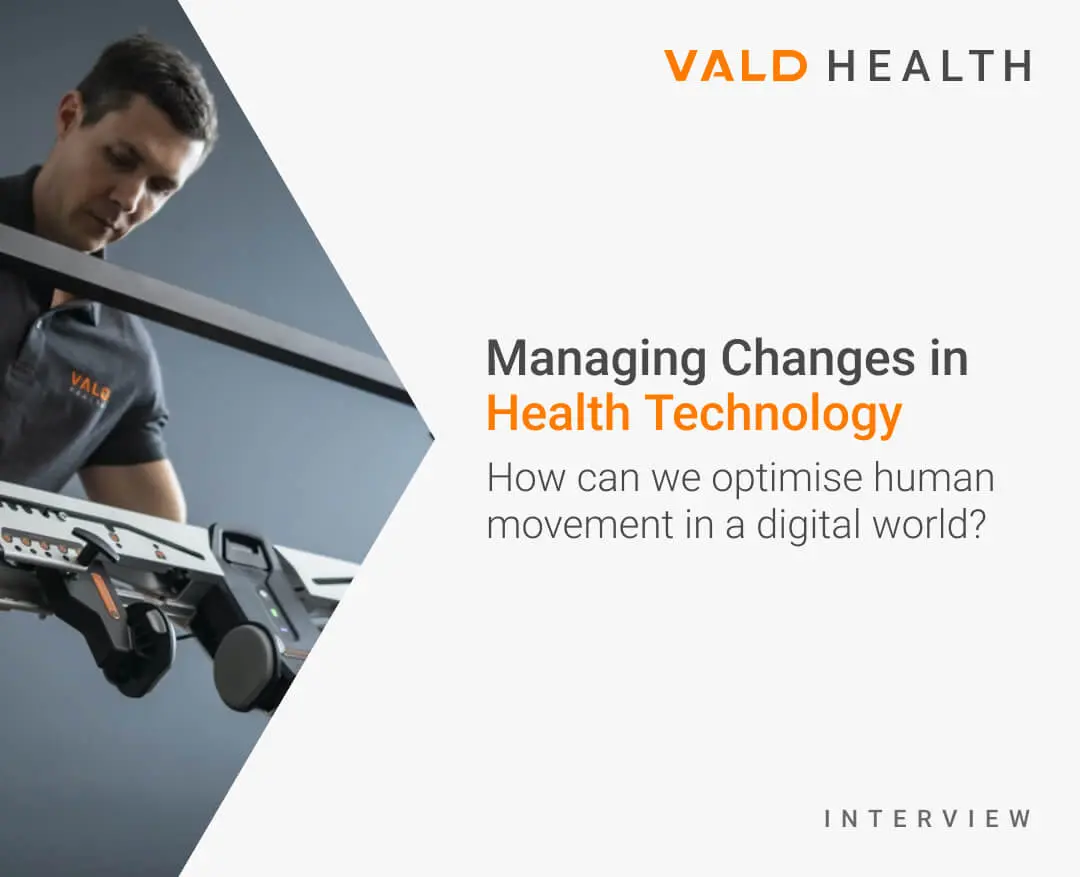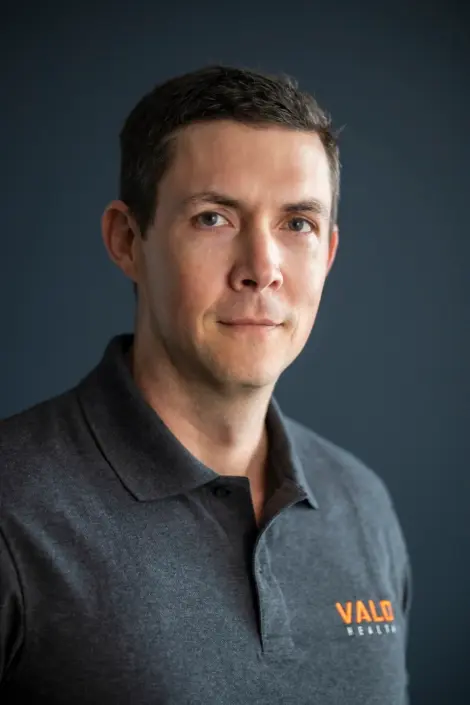Managing changes in health technology: How can we optimise human movement in a digital world?
Available in:
EN
Interview with Matthew Roodveldt
Technology in the health industry is constantly being disrupted, and there can be challenges with balancing the need for updates, and keeping current technology running smoothly.To gather more insight, we interviewed VALD Health product manager, Matthew Roodveldt about his career journey in health technology development; and how he manages these challenges.
First of all, where did your interest in technology begin?
After my undergraduate degree, I worked in various research roles across multiple health-related fields. Having to manipulate large volumes of data manually seemed incredibly inefficient and took up a huge amount of time. I was introduced to some simple programming which opened my eyes to the possibilities and pursued things from there.
From research, I moved into the construction industry and was fortunate to be involved in the burgeoning use of technology in projects across Australia. From an industry that previously used stringlines to know where to dig to being on the brink of having autonomous construction machines was an incredibly exciting period.
During this time I was also able to grow a software team to localise technology designed to suit processes overseas to be fit for purpose in Australia.

What does a regular day as the Product Director at VALD Health look like?
Every day starts with standup meetings for each of the product teams. The purpose of these standups is to distribute relevant and important information across members of the team, to make quick decisions if required and also to make sure no one is blocked for the day. We also use this as an opportunity for support to let the product groups know of any particular issues.
It’s always a juggle when prioritising new features vs. minor improvements and maintaining the overall environment.
“As much as we would all love to work on new features all the time, there is always the need to keep the existing software running smoothly and ensuring the supporting infrastructure is in place to ensure the systems remain reliable and fast as our user base continues to increase.”
Another unique challenge that we face on a daily basis is ensuring solutions we are developing are relevant for the markets that we supply. Whilst the features can largely remain the same, there are certain nuances across our markets in how data is collected, how frequently it’s collected, how users want to access their data, how users prefer to digest their data and what types of decisions need to be made from the data. As a result of this, we understand how important it is to speak to our clients to work out what they need from the VALD suite. In addition to this, we are fortunate to have domain experts available to help guide the product team in prioritising development tasks.
You must need to manage the expectations of a number of stakeholders on a day to day basis, how do you go about this?
Having a large product suite has obvious challenges with competing priorities and resourcing needs. It is vital that the overall business goals and how individual products fit in the grand scheme of things is clearly communicated.
For example, we establish quarterly plans to communicate feature timelines to all departments.
Priorities do change and affect timelines, but we do our best to keep an open line of communication to ensure releases and go-to-market plans are as streamlined as possible.
How has the COVID-19 pandemic affected VALD?
It’s fair to say our business and industry has experienced massive disruptions due to COVID-19. Pretty much all of our clients globally were required to shut or significantly change their businesses. Proudly, we have been able to work together with our clients to work through alternate arrangements.
Unexpectedly, one of our products, TeleHab, has seen a massive increase in sign-ups as COVID-19 has created an unprecedented demand for telehealth solutions. TeleHab is a free platform for health professionals to prescribe exercise programs, monitor clients’ rehabilitation progress and perform video consultations.
We’ve invested in our product and marketing team to amplify our digital marketing presence and bolster sales support, whilst developing new features and staying ahead of the curve from a product standpoint.

How has the role of technology in health changed over the last 5 years – Do you see the role of technology changing in the next 2 years?
VALD’s foundations are in elite sport where human measurement technologies are still new, less than twenty years old. There has been substantial research on strength, imbalance and injury risk in the last ten years and how to test this reliably and repeatably. But there is still a long way to go. Strength and imbalance is only one piece of the puzzle and an athlete’s risk of injury can also be influenced by age, past injuries, training loads, fatigue and a number of other factors we can’t measure, let alone influence. The goal for us is to provide the practitioner with as much objective information as possible to help guide their decision making.
“Normalised data views will also be beneficial to the health industry as they are in elite sport.”
The health technology industry is less than ten years old and a big barrier to getting technology in private practice was the cost and complex, time-consuming nature of analysing raw data. VALD has been working to democratise technology and help clinics with implementation. In the next two years, I would expect to see improved integration between technology systems as well as providers. Normalised data views will also be beneficial to the health industry as they are in elite sport and we have seen a number of organisations collating their own data pools to guide future decision making.
What’s the next big thing for VALD?
Later this year we have major updates coming to our ForceDecks Dual Force Plates System and HumanTrak Movement Analysis System including integration with VALD Hub which is where data from our other systems is collated.
“VALD has been working to democratise technology and help clinics with implementation. In the next two years, I would expect to see improved integration between technology systems as well as providers.”
As we work towards an entirely integrated technology suite we’ll be able to leverage the volume of data we have to provide normative ranges to help health professionals make better informed decisions.This article was originally published in Issue 19 of Allied Magazine.If you would like to read our other article feature, please see here.
About Matthew

Matthew Roodveldt is Product Director at VALD Health. Matthew has an undergraduate degree in human movement and worked in research for human movement studies and physiotherapy. Following this, Matthew has spent the last ten years managing a software development group and is combining this experience with an in-depth understanding of the needs of the healthcare market.
